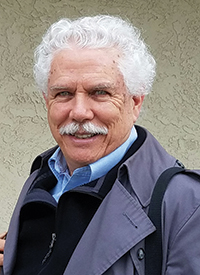This blog is part of our 2021 Enlightenment Courses, an exclusive benefit for members of Edgar Cayce's A.R.E. Each month John Van Auken provides a lesson with a worksheet, a video, a blog, and in each issue of the member magazine, Venture Inward, he writes an article about this topic. For 2021, the topic of study and practice is Enhancing, Our Minds, Intuition, and Dreams. Members can access all of the available material in the Member-only section of our website at EdgarCayce.org/members. Not a member but interested in this course? Join now. Here's a taste of the March Lesson on Dreaming and Dreams.
Enhancing Our Dreams
Edgar Cayce began his teaching about dreams by first giving us some important principles that we need to understand to succeed.
“When the physical consciousness is at rest, the other-self communes with the SOUL of the body, see? Thus, correlating with that as the entity has accepted as its criterion or standard.” (EC 5754-1 through 3) In this teaching we see how Cayce gives the subconscious the role of “correlating” our life activities with our soul's standards or ideals. Actually, he insisted that we grow best when we actively set and are fully conscious of our ideals, striving to live up to them.
Research
In the 1950s researchers began examining brainwaves using electroencephalography (EEG). The scientists discovered a surprising stage during human sleep. During the first stages of sleep (an hour or so) brainwaves slow down, our muscles and eyes relax, and heart rate, blood pressure, and body temperature decrease—all signs of resting from activity. When people are awakened during this early stage, they recall only fragmented thoughts, not active dreams. Over the next hour or so, brain activity dramatically changes. The relaxed eyes begin to show rapid eye movement (REM) underneath the closed eyelids. The neocortical EEG waves come as alive as they are during waking life! However, this fast, waking-like EEG activity during sleep is accompanied by atonia, which is paralysis of the body’s muscles. Only the muscles that allow breathing and control eye movements are active. Heart rate, blood pressure, and body temperature become much more enlivened and increase. It’s as if some part of us is active beyond physical life. These cycles of slow resting waves and active REM sleep alternate, with the slow wave sleep becoming less deep and the REM periods more prolonged. During these REM cycles, a phenomenon common to ALL human beings takes place: active dreaming. All humans dream, whether or not they remember their dreams. When researchers woke any and all persons during their REM stage, they were dreaming. Thus, every human dreams.
The 4 Types of Dreams
As an aide to interpreting dreams, Cayce described four broad kinds of dreams. Often, identifying the kind of dream just experienced helps the dreamer begin to interpret the dream’s purpose and meaning. While Cayce was clear that some dreams are just nonsense or nightmares resulting from the body trying to handle troublesome foods or other biological upsets, he said our meaningful dreams fall into these categories:
Physical: dreams that provide helpful information about our physical bodies and our health through symbols that may suggest how to improve our diet, a kind of exercise needed, warnings of potential illness, and so on. These dreams can even provide specific suggestions for maintaining health and treating problems.
Self-revealing: dreams that provide self-knowledge and insight into problems, goals, desires, plans, decisions, relationships, character traits, and so on.
Psychic: dreams that reach out through the windows of telepathy, clairvoyance, and precognition to provide insight and information not accessible by our ordinary three-dimensional consciousness.
Spiritual: dreams originating from the dreamer's higher self, dreams flowing from the superconscious mind and the Universal Forces. Cayce often called such dreams “visions.”
From Cayce’s perspective, these four kinds of dreams serve two functions: (1) to solve problems and (2) to aid in spiritual growth, which he often called “soul growth.”
Watch an invitation from John Van Auken and learn more about this year's Enlightenment Courses.






